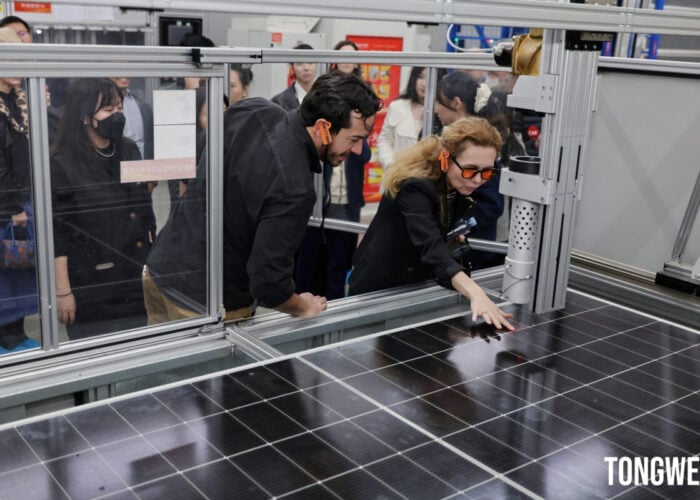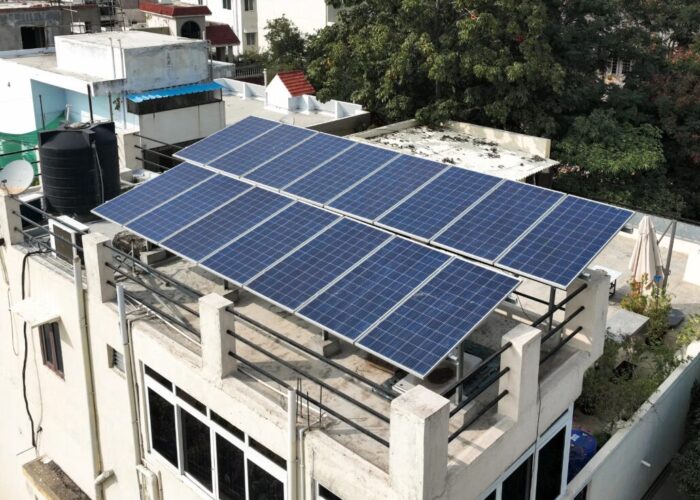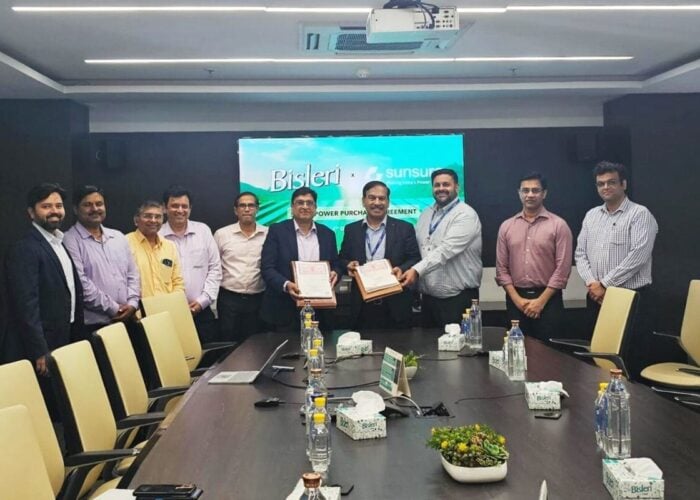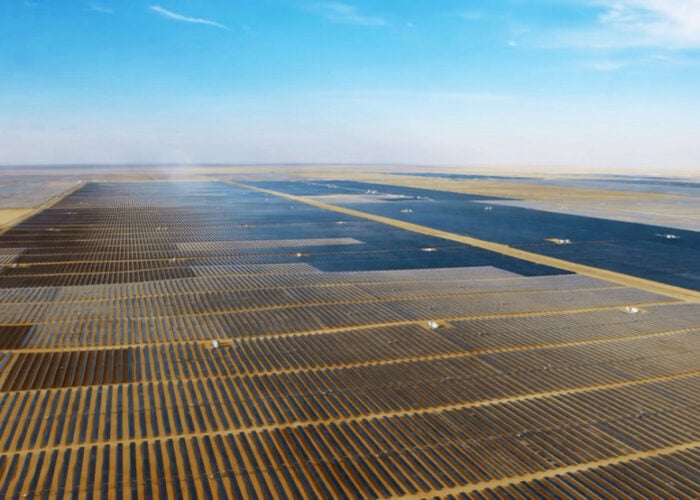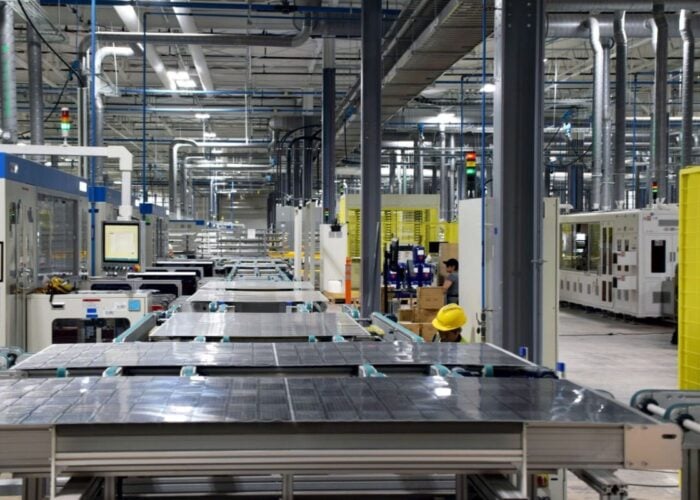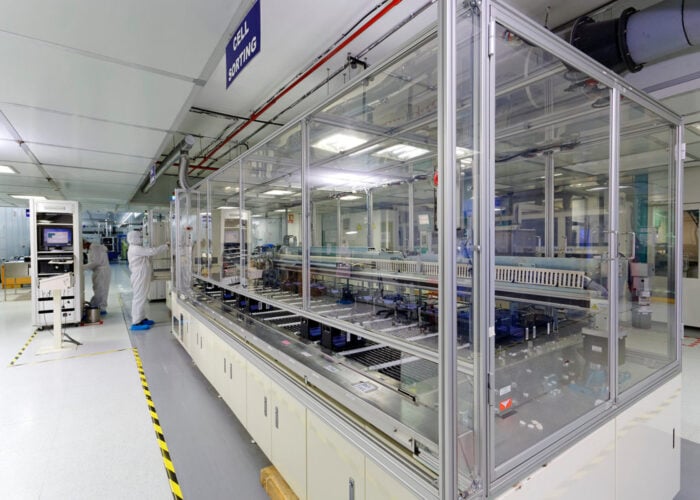
During the 6th China International Photovoltaic Industry Conference (CIPVIC) held in Chengdu, China, last month Professor Martin Green was one of the most prominent guests, with media – among them PV Tech – able to interview Green on several topics, including China, solar cell technologies and which country is most promising in terms of solar supply chain capacity.
Green’s contribution to the PV field is undeniable, and he was awarded a Queen Elizabeth Prize for Engineering earlier this year for his contribution to the invention of passivated emitter and rear cell (PERC) technology at the University of New South Wales, Australia, in 1983 along with Andrew Blakers. Green’s research also involves work on doped-polysilicon/thin-oxide/silicon versions, which we now know as tunnel oxide passivated contact (TOPCon). TOPCon has taken the lead in terms of n-type technology this year, competing with heterojunction – which Green says is starting to look “very interesting commercially” – and interdigitating back contact (IBC).
Try Premium for just $1
- Full premium access for the first month at only $1
- Converts to an annual rate after 30 days unless cancelled
- Cancel anytime during the trial period
Premium Benefits
- Expert industry analysis and interviews
- Digital access to PV Tech Power journal
- Exclusive event discounts
Or get the full Premium subscription right away
Or continue reading this article for free
As all technologies are competing to be the market leader in the upcoming year, Green says it will be an “exciting five years coming up”, and though TOPCon has positioned itself as the new market leader, taking on PERC’s position, Green expects IBC to be the winner in the long run.
“My belief is that IBC technology will win eventually. But whether all companies will switch to that in five years, or whether it will take longer, I’m not too sure. But I think eventually, everyone will be manufacturing IBC cells,” says Green.
This year was also marked by price drops across the entire cell value chain, from polysilicon to wafers. The price of mono-grade dense polysilicon dropped below the RMB80/kg (US$11/kg) average price range from 2019-2020, with last week’s prices lowering between RMB59-65/kg with sustained price declines continuing across the value chain.
Green explains that there was still room for substantially lower costs with solar PV which would be reached through a combination of improved conversion efficiency for the solar cells and more electricity produced per unit area from the cells. “That helps drive down the costs, but also through the increase of manufacturing scale. So the equipment every year is bigger with higher throughput, with each production line being bigger than the previous ones. All that also reduces the cost.”
“China has shown the world how to make solar cells cheaply”
Given that the event was held in Chengdu, Green also spoke about China’s solar manufacturing dominance as a global leader, with other countries and regions trying to develop their industries in order to meet the ever-increasing demand for solar PV globally. “China has shown the world how to make solar cells cheaply. And I think other countries will now be able to also manufacture solar cells cheaply, although never as cheaply as seen in China,” explains Green, adding:
“Maybe five or 10 years ago, that wasn’t the case. But just with recent developments, and I guess the size of the research laboratories that all the major manufacturers have now, it’s become pretty clear that with the amount of experimentation and optimization that can be done within these companies, they’re really at the cutting edge of the technology development.”
China’s dominance in the solar industry is not only seen at the upstream level, where the country represents more than 80% across the entire value chain of solar manufacturing, from polysilicon to modules, but also in terms of research and development, explains Green, as shown more recently with China setting world records for silicon cell technology. The record was held by Green’s group for nearly three decades, then going to Japan for eight years before China emerged with the record, a trend which Green expects to continue.
Not only is China at the front of the silicon solar cells technology but is also working on improving cell efficiency of what has been seen as the next generation of solar cells: perovskite. Green highlighted how a Chinese company, LONGi, recently announced a world record for silicon-perovskite solar cells with a power conversion efficiency of 33.9%.
Despite the continuous interest in perovskite technology to be stacked onto silicon, there are still many challenges before it becomes available commercially. Chief among them is its lack of stability, says Green. “It’s not certain whether the stability is ever going to reach the very high levels that people have come to expect from silicon panels. I think there’s more research needed in other candidates apart from perovskites.”
Green highlights how silicon is an ideal material for solar PV; it is abundant, it is non-toxic, it is very stable and silicon cells can have a high efficiency. “It’s difficult to find other materials that have those four properties,” adds Green.
India among most promising markets
With other markets implementing new policies or subsidies in order to boost a domestic solar manufacturing industry, Green said that India was the most promising of the lot.
“My own hope is that India is the one that’s successful of those. Because they obviously have a very large and growing demand for energy. Similar to what China has had in the past. And hopefully, they’ll be able to supply more of that demand with solar.”
Not only India has implemented a basic customs duty on imported cells (of 25%) and modules (of 40%) -which is in force since April 2022 – it has also increased funding for its Production Linked Incentive (PLI) scheme which had its second round earlier this year, with nearly 40GW of solar manufacturing capacity awarded.
“India has a very strong programme, where they’ve been investing in some of their big conglomerates, encouraging them to get involved in solar. And that programme seems to do very well at the moment,” concludes Green.

